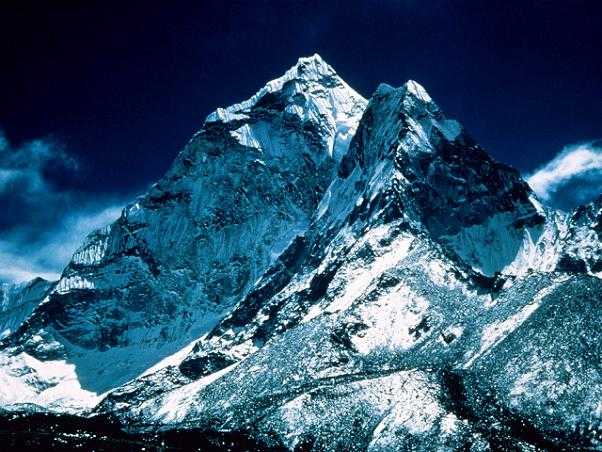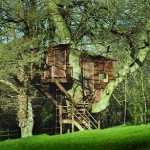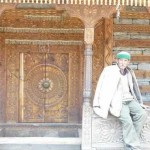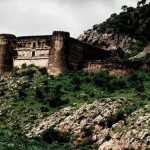Disclaimer: First book review, and no intentions to stick to a conventional format.
-
The first time I heard of Into Thin Air was when Reader’s Digest India put an extract of the same in its ‘Book Section’. That was over ten years ago, and though I never tried to search for the book, it never really left my mind.
I found it a week back, sitting amongst hundreds of other uncared for books, in a street stall below a mall. They just lay there, wherever they pleased, caring not two hoots for chronology. I asked the keeper if he had Alex Garland’s The Beach and he asked me if it was a magazine. Five copies of Chetan Bhagat’s latest sat proudly in the front.
Into Thin Air is in essence Jon Krakauer’s account of one of the most tragic Everest expeditions in the 59 years since the mountain was first conquered. By his own admission, Krakauer says he wrote the book to purge himself of the guilt, remorse and shock he felt when twelve men and women died over the course of one horrific night while returning to Camp Four from the summit, while he remained exhausted and sleeping in his tent, having returned an hour before a gale broke out.
But for me, the book is a lot more than that. Right from the beginning of the book - for Krakauer does not wait for you to get your coffee or your breath, he delves right into the story from the first page dragging you through the blizzards at 27,000 feet, the frostbites, the breathlessness, the tremendous will it takes to push that boot and pickaxe one more time into the snow when your lungs and heart have given up on you – I could not stop wondering why.
Why would someone try so hard? Why would someone climb one more mountain even when they have experienced injuries, cerebral diseases that previous time? Why would a man who lost vision in one eye while climbing a mountain, try to climb Everest knowing that the chances of him returning alive are as probable as throwing a coin five times and getting it correct every time. There has never been a man who stood at the summit and had the time to enjoy himself.
The problem is that you can never want to not support a man who loves purely. And Krakauer’s love for mountaineering is that rare kind. He rattles of names and statistics of mountaineers like we do of cricketers, he quotes them and tells their anecdotes in a manner that’ll make you want to rush and hunt for them in every library once you have finished reading this one. And he doesn’t have to try, talking about it comes naturally to him, as it comes naturally to all those who love something deeply.
Very soon, I realized that I had to stop thinking ‘why’. One should really not try to get into a mountaineer’s mind. People climb mountains not because they are full of adrenaline and need to spray all that testosterone in the highest regions of the world. Neither do they climb mountains because they dislike civilization or anything that comes with it. Those who climb peak after peak after icy peak, do it, because they just have to.
Why does one necessarily have to climb Everest?
In the words of George Leigh Mallory, a handsome British man who was part of the first three Everest expeditions, one climbs Everest “Because it is there.” It is one of the most famous Everest quotes ever.
After two serious attempts in 1921 and 1922 when he refused to use bottled oxygen saying it was ‘not British’, Mallory decided to attempt summiting Everest one last time with his climbing partner Sandy Irvine. Last seen only a few hundred metres away from the summit, they then disappeared forever. Mallory’s body was found in 1999, seventy five years after his death. Whether or not they reached the top remains a question of constant speculation and 88 years hence, investigations are still on.
While reading the book, you also wonder why clients who do not have climbing experience on the toughest terrains are allowed to climb Everest with guides just because they have the money to do so. Of course, it is easy to be wise after failure, and once the survivors returned to their countries, there were angry questions being raised all over the developed world about eligibility. You also wonder why Nepalese sherpas who don’t just climb the peak and help the clients whenever they have exhausted their limits, but also set up the tents, cook food for the entire party, walk ahead and set up rope trails, are paid lesser, ten times lesser than the European guides.
Into Thin Air is also the story of Robert Hall, five time Everest climber, and the leader of the expedition of which Krakauer was part, who dies because he refuses to leave a client who is too incapacitated to come down by himself. It is the story of Doug Hansen, the aforementioned client, who has come to Everest because a year back he was asked to turn back by Hall only five hundred metres from the summit, and has never stopped despairing about the fact even for a day. It is the story of Yasuko Namba, a diminutive forty-seven year old Japanese woman with extraordinary courage; the story of Beck Weathers who has almost gone blind during the expedition, and then stays two nights frozen on the mountain and is deserted by all, but still somehow wakes up from the dead and walk back to camp. It mentions Goran Kropp, a Swede who decides to cycle all the way from sea level in his country to Nepal, till he finally ascends Everest without bottled oxygen, being, on the way, mugged by Romanian schoolchildren, thrashed by a Pakistani mob, and nearly stoned in Iran.
It is an extraordinary story of a number of extraordinary men and women who died doing what they liked doing most, in the highest place in the world. It will leave you perplexed, it will leave you provoked, it will make you keep the book down and pace up and down for no reason; and it will make you shake your head at the mistakes they made on that fateful day 10th May ’96.
I have not read over two hundred books in my life, certainly not any on mountaineering. But as the Wall Street Journal quote on the cover, Into Thin Air ranks as “one of the great adventure books of all time.”
-























I had watched the movie on TV some years ago and even the movie was well made. I did not know then, that there was a book. After reading the review I got to get my hands on that book.
It is regular, to say that ‘the book is always better than a movie’, but this one is, fantastically so. Get hold of it, Anvith!
Great movie and a good account here as well.
Arun, which one did you like better? the movie or the book?
A gripping read indeed!
The difference between Jon Krakauer’s other book made into movie ‘Into the wild’ and this one is that, the latter is the author’s own experience while in the former he is trying to recounting the experience of a person ( no longer alive) and the result is that it lacks a certain ‘life’ ( Pun unintentional).
Heh, fair point, sunglasses woman! And you have read both books? I am impressed!
And you have read both books? I am impressed!
Read The Climb by Anatoli Boukreev which gives another account of the same tragedy and then let us see if you feel the same way about Into Thin Air.
Mridula - Aaah, well, I do not know if I want to be the judge between two men’s words, pitted against each other. But I’d like to read it still, to know more about how a mountaineer thinks, on the feelings Everest evokes, and to understand the range of emotions a human mind goes through in terms of turmoil, triumph and despair.
Just read it and see if it changes you in some way!
Aye aye cap’n, I shall!
Sounds like an inspiring book. More than that, this is such a well written review.
Merci beaucoup, DN!
More than the book it your take on events and accounts of mountaineers that is interesting. I liked the way you have written it. Yes it doesn’t follow conventional format, but that is what makes it more human and internal.
Idhar aao Meenakshi, let us hug you for calling moi ‘human’, something that my sister will refute ferociously Jokes apart, I felt quite silly while writing it, felt quite overshadowed by Krauker’s own writing, to be honest. But thank you for liking it.
Jokes apart, I felt quite silly while writing it, felt quite overshadowed by Krauker’s own writing, to be honest. But thank you for liking it.